Cover to Cover
Barbara Quek and Zoe Yeo highlight entertainment magazine covers of yesteryear from the collections of the National Library.
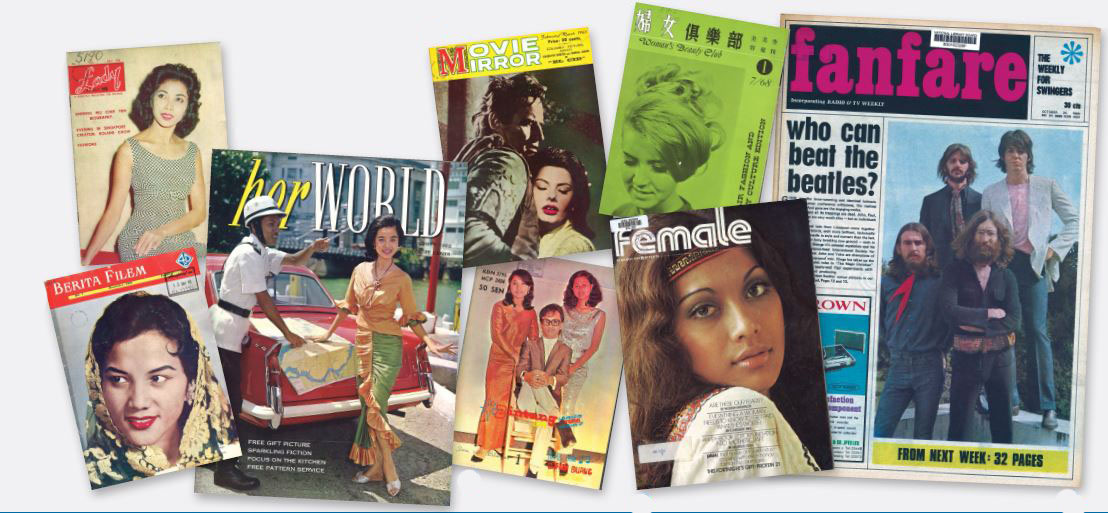
For many of us (of a certain vintage), entertainment magazines were part and parcel of our growing-up years. We spent many delightful hours poring over such magazines for news and gossip of our favourite celebrities or the latest in film, music and fashion. We eagerly awaited to buy the next issue – much to the exasperation of our parents – or else tried to borrow a copy from friends or read it at the library.
Teenagers today are just as enamoured of entertainment magazines as their parents were many years ago; the big difference is that they are spoilt for choice these days. Although the news is likely to be digitally consumed via a smartphone, tablet or notebook, recent research indicates that young people also show a predilection towards reading the tried and tested way – on old-fashioned ink and paper.
Pleasures of the Past
The “golden age of Malay cinema” between 1947 and 1972 saw the emergence of key players like Shaw Brothers’ Malay Film Productions and Cathay-Keris, which went on to produce many iconic films during this period. Singapore’s film industry began a slow decline in the post-independence years with the influx of movies from Hong Kong and Taiwan. To fill a void in the local entertainment industry, magazines were launched to keep fans engaged.
Since the early 1950s, women in Singapore have fought for basic rights in marriage, education and work. The growing awareness of women’s rights, aided by the launch of the Singapore Council of Women in 1952 and the Women’s Charter in 1961, unleashed a slew of magazines targeted exclusively at women, such as Malayan Lady and Her World – launched in 1959 and 1960 respectively. Her World was the first of its kind, and has outlived many of its competitors to become the most popular woman’s magazine in Singapore today.
The launch of Singapore’s first television station, Television Singapura, in February 1963 was a game changer in the entertainment scene. Television was such a novelty in those days that viewers were just as entertained by commercials as they were by the actual programmes. Magazines such as TV & Radio Magazine (电视与广播), and later Fanfare and Radio & TV Times, appeared on the scene to capitalise on the allure of television and the accompanying line-up of local celebrities it ushered. Fanfare is no longer around but TV & Radio Magazine and Radio & TV Times have since evolved to become the hugely popular i-Weekly and 8 DAYS respectively, two of Singapore’s longest-running entertainment magazines.
Covers from Yesteryear
The National Library has a rich collection of entertainment magazines acquired over the years or deposited by publishers in the Legal Deposit Collection, an archive of over 1 million items. Highlighted here is a small sampling of magazines from the Lee Kong Chian Reference Library and the Legal Deposit Collection.
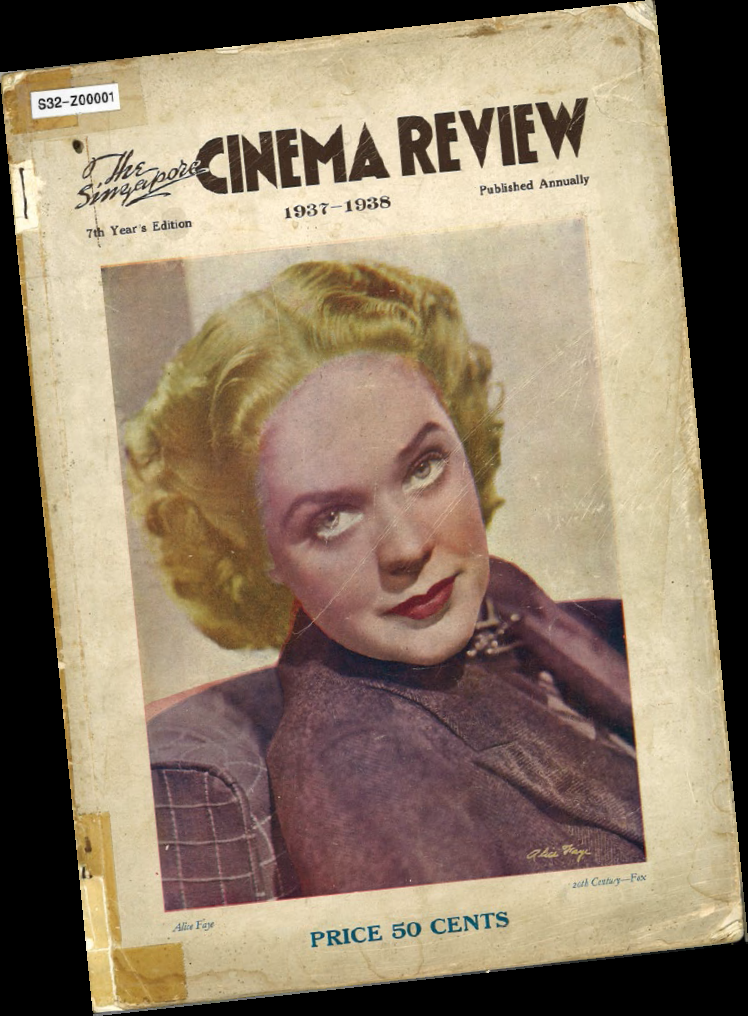
The Singapore Cinema Review (7th edition, 1937–38); publisher: William Robert Williams
When “sound” films took off in the early 1930s, it ushered in the Golden Age of filmmaking in Hollywood. Local audiences, bitten by the Hollywood bug, flocked to cinemas such as Alhambra, Palladium, Capitol and Cathay to catch the latest imports. Film-related fan magazines such as The Singapore Cinema Review became popular as a result. This annual publication, first launched in 1932, offered the latest news on Hollywood film releases and popular stars of the time, such as Bette Davis and Katharine Hepburn. This issue featured the American actress and singer Alice Faye on the cover.
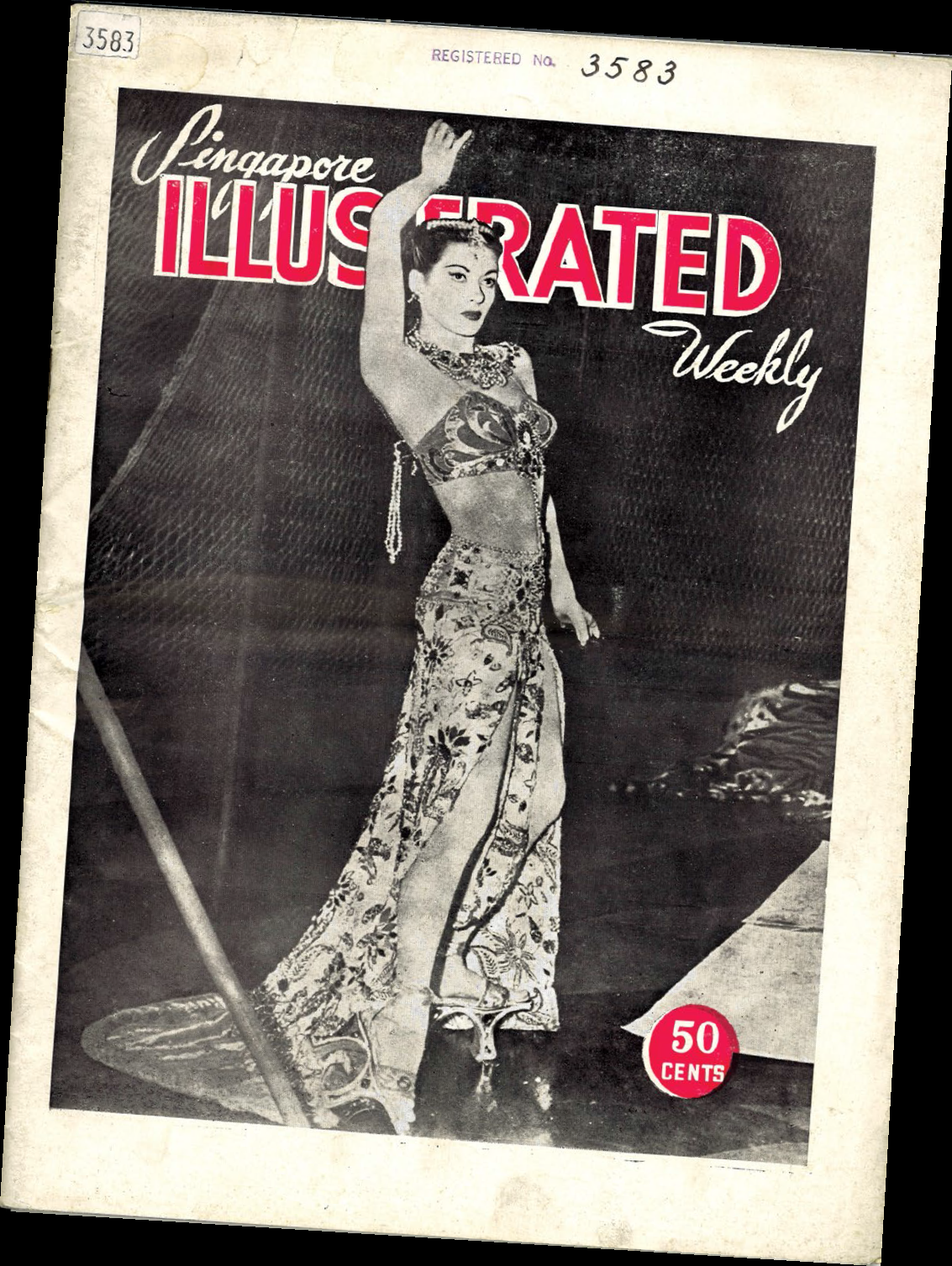
Singapore Illustrated Weekly (Vol. 1, No. 1, 2 August 1947); publisher: W. G. P. Davies
From fashion to sports, and travel to theatre, Singapore Illustrated Weekly covered a variety of entertainment-related topics from around the world. As a prelude to the release of the film, Song of Scheherazade (1947), in Singapore, the Hollywood lead actress Yvonne De Carlo is photographed on the cover of this inaugural issue, poised during a dance performance. The film is based on the life and music of Russian composer, Nikolai Rimsky-Korsakov.
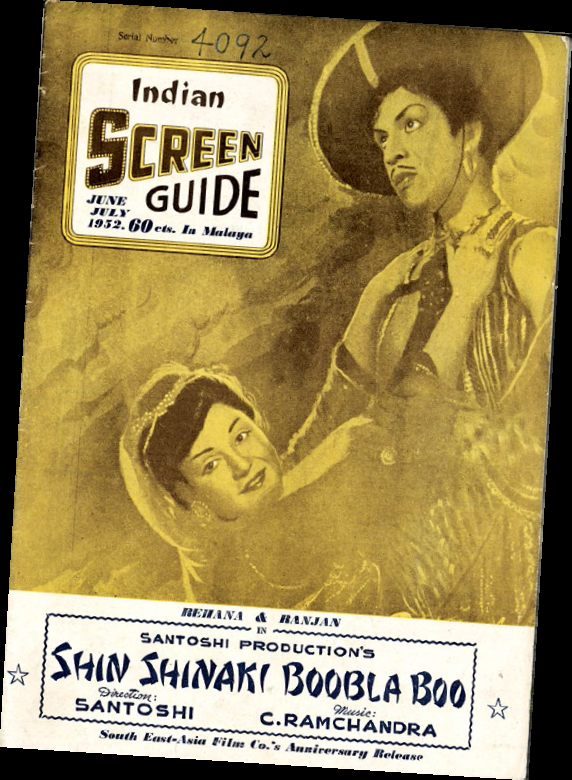
Indian Screen Guide (June/July 1952); publisher: Ranjit Singh
This Indian film guide, published in English, was possibly the first of its kind when it was launched in Singapore in 1952. At the time, Tamil and Hindi movies were popular not only among Indians but also with non-Indian film-goers. The cover of this inaugural issue featured the Hindi film Shin Shinaki Boobla Boo (1952), starring Ranjan playing the character Boobla Boo and Rehana as Shin Shinaki.
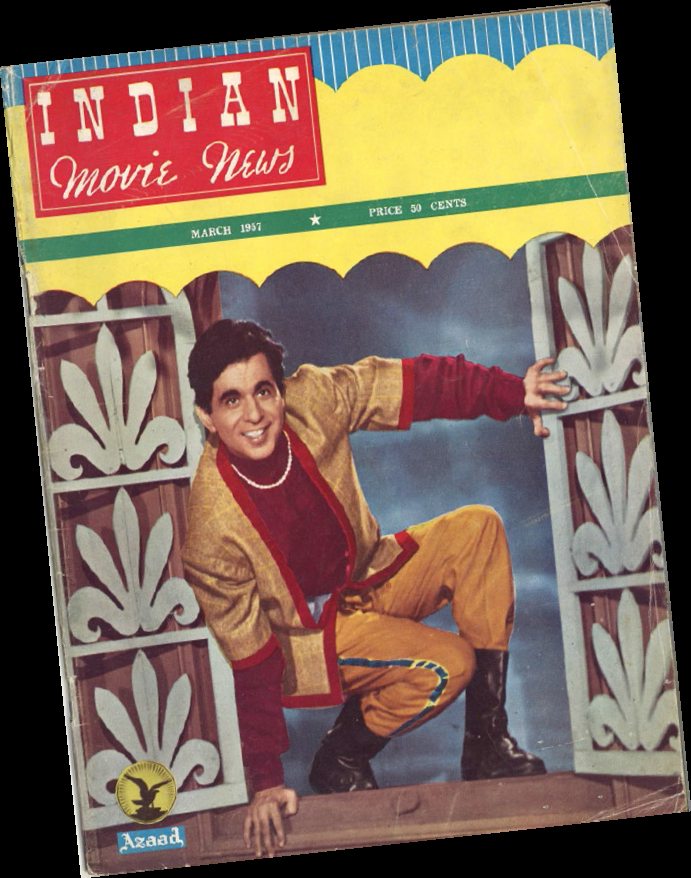
Indian Movie News (Vol. 5, No. 8, March 1957); publisher: I. S. Menon
In the 1950s and right till the late 70s, Tamil and Hindi films were screened to full houses in Singapore and Kuala Lumpur. Royal and Diamond theatres, standing side by side along North Bridge Road were two of a handful of cinemas that specialised in screening Indian films. Indian Movie News, a bilingual magazine published in English and Tamil, featured happenings in the Indian film industry and interviews with film stars. Actor Dilip Kumar, pictured on the cover of this issue, plays the titular role in the film Azaad – the top grossing Hindi film of 1955.

Malayan Lady (Vol. 1, No. 1, July 1959); publisher: International Service Organisation
This monthly women’s magazine in English offered more than just fashion news. Highlights of this inaugural issue included articles on Malay marriage customs, Japanese floral arrangement, home décor tips and “Evening in Singapore”, an interview with the late Roland Chow, one of Singapore’s foremost hairstylists. Singapore dance pioneer Rose Eberwein, featured in an article inside, graced the cover of the first issue published in July 1959.
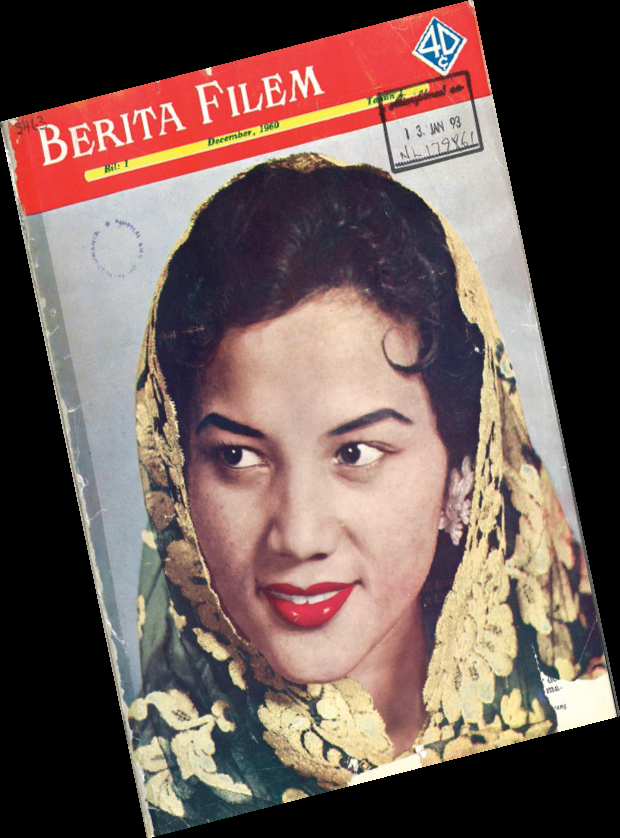
Berita Filem Film News (December 1960); publisher: Mohd. Salleh Haji Ali
This magazine showcased the Malay film industry and the popular stars of the time such as P. Ramlee, Sa’adiah and Maria Menado. The years spanning 1947 to 1972, which saw film studios like Shaw Brothers’ Malay Film Productions and Cathay-Keris at their peak, is now regarded as the “golden age of Malay cinema”. This inaugural issue featured articles written by two special guest writers, the actresses Sa’adiah and Normadiah. Pictured on the cover is the actress Salmah Ahmad, who starred in three films in the 1950s that featured pontianak, a vampiric ghost from Malay folklore.
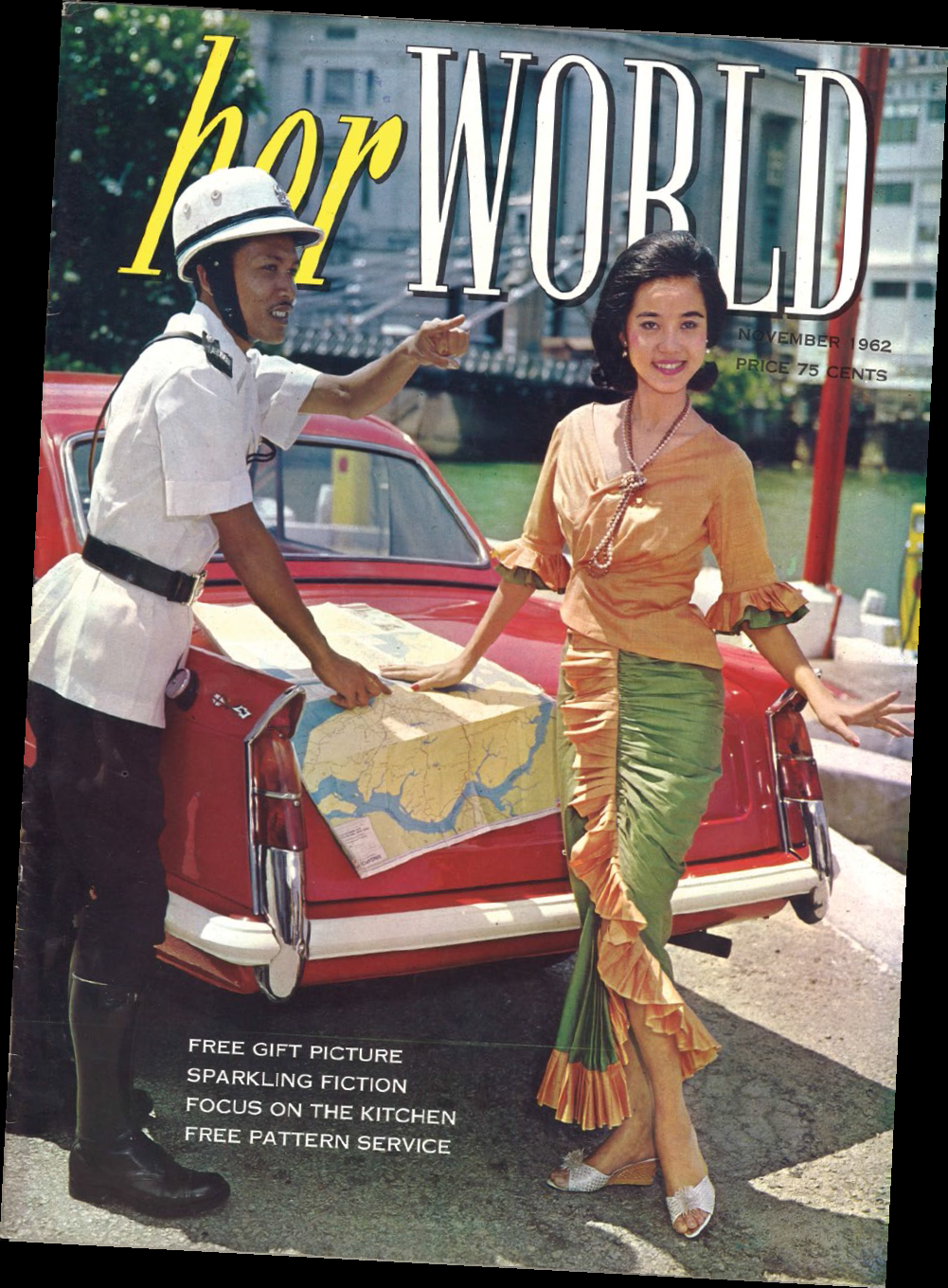
Her World (November 1962); publisher: Straits Times Press (Malaya) Ltd
Since its inaugural issue in July 1960, this pioneer women’s magazine has stood the test of time and continues to reign as the most popular and recognisable women’s magazine in Singapore today. As a microcosm of women in Singapore society, Her World has successfully captured changing trends in lifestyles and gender-related issues over the decades. Apart from the usual features on fashion, makeup and food, the lead article of this issue was “Are Mothers Responsible for Juvenile Delinquency?” – a headline that will likely make the modern mothers of today fume! On the cover is model Tessie Lim, dressed in a traffic-stopping sarong kebaya.
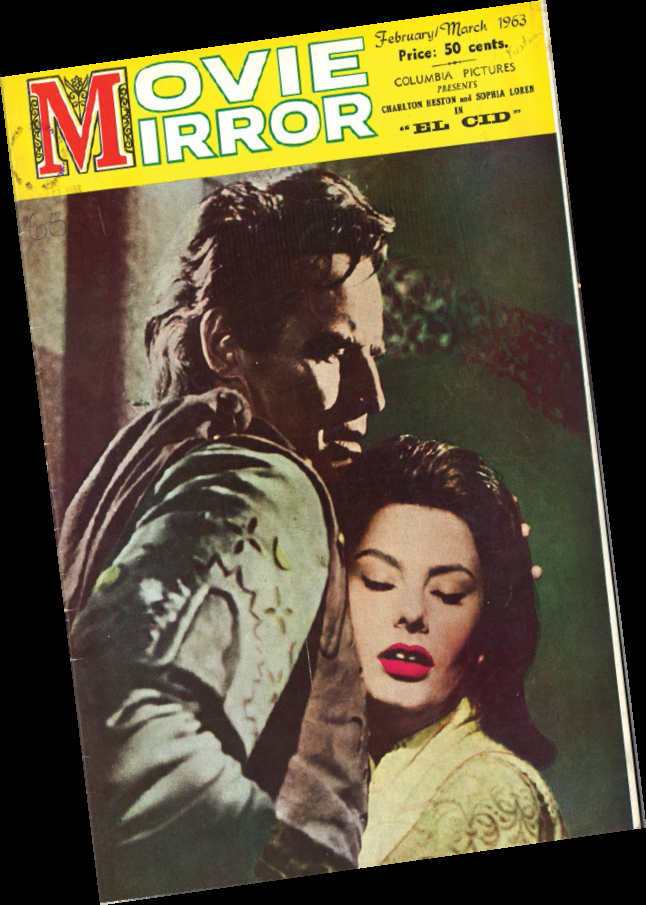
Movie Mirror (Vol. 1, No. 1, February/March 1963); publisher: Malaysian Enterprises
Movie Mirror first hit Malayan newsstands in 1963, bringing the latest film news in English to fans in this part of the world. The cover of this maiden issue featured Charlton Heston and Sophia Loren in the movie El Cid (1961), which American director Martin Scorsese hailed as “one of the greatest epic films ever made”. Also mentioned in this issue is the film Cast the Same Shadow, a joint production by Cathay Keris and Precitel and loosely based on the life story of Maria Hertogh, whose custody lawsuit triggered a series of riots in Singapore in December 1950.
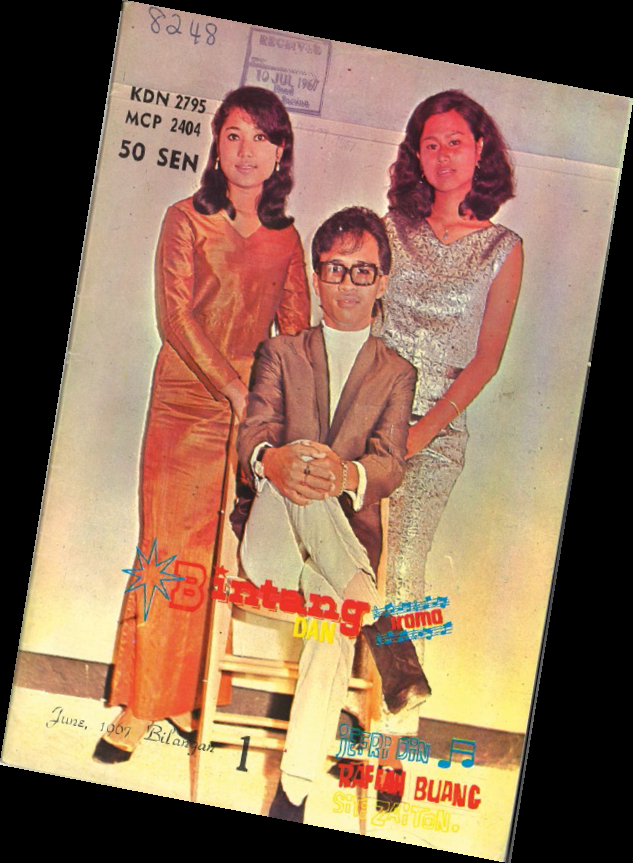
Bintang dan Irama Star and Rhythm (June 1967); publisher: Suhaimi Enterprise
Bintang dan Irama, which means “star and rhythm” in Malay, was a popular magazine that cast the spotlight on the Malay entertainment scene in the 1960s. This issue contains song lyrics and mini biographies of then popular singers such as Hussain Ismail, Jefri Din and Rafeah Buang, who were stars in the Malay pop industry during the “Pop yeh yeh” era, a genre of pop music that was in vogue in the 1960s. Featured on the cover of this first issue are Jefri Din (seated) with Rafeah Buang (left) and Siti Zaiton (right).
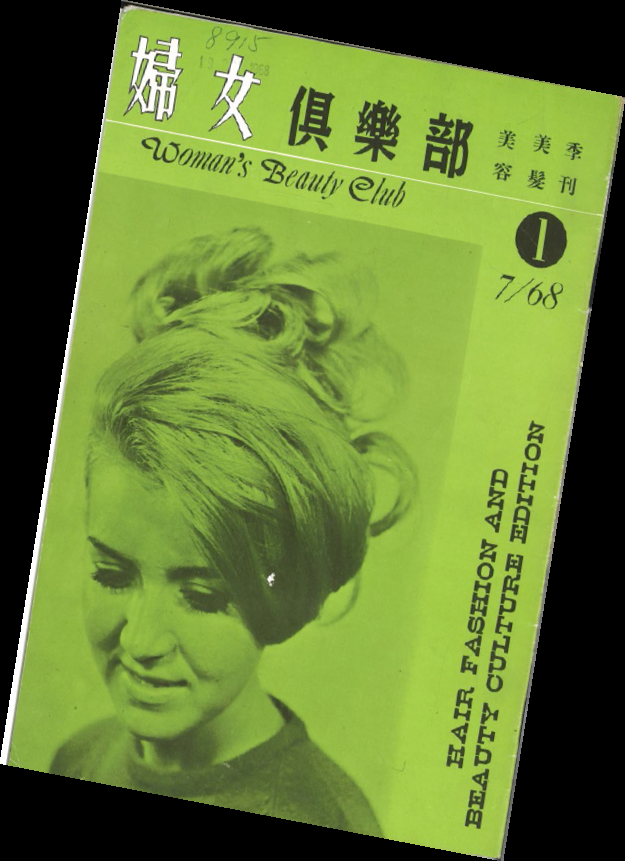
妇女俱乐部: 美容美发季刊 Woman’s Beauty Club: Hair Fashion and Beauty Culture Edition (July 1968); publisher: 妇女俱乐部出版
This Chinese women’s magazine showcased the latest in hairstyles, fashion and makeup in the late 1960s and early 70s. Bouffant styles such as the voluminous beehive as well as the “Lion City” hairdo, which was designed to “portray light, feathery movements that reflect the classy side of the Singaporean lady”, were very popular at the time. These hairstyles were showcased in the maiden issue of the magazine published in July 1968.
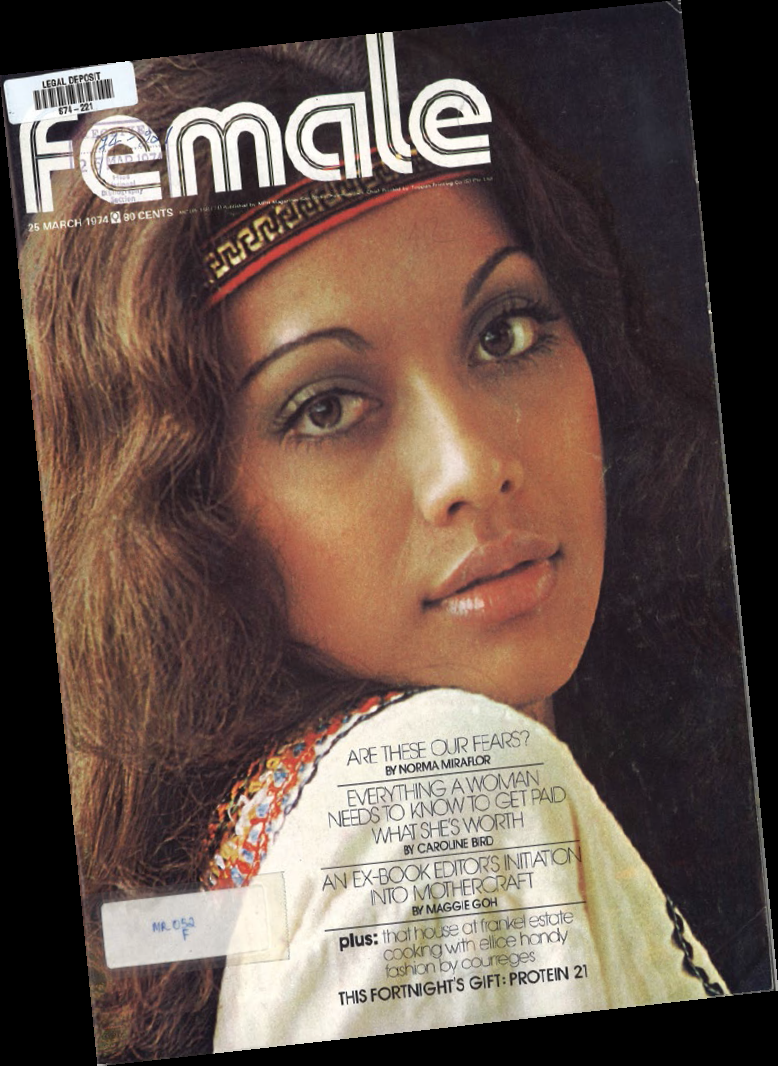
Female (25 March 1974); publisher: MPH Magazines Sdn. Bhd.
Launched in 1974 by MPH Publications, Female is probably the closest competitor to Her World in the women’s magazine business. In terms of content, it is not vastly dissimilar from Her World. The cover girl for the 25 March 1974 issue was Debra de Souza, who was crowned Miss Singapore in 1973 and represented the country in the Miss Universe pageant in Athens and the Miss World pageant in London the same year. Female was acquired by SPH Magazines in 2004 and received an extensive makeover. It now markets itself as “Singapore’s No. 1 fashion and beauty curator”.
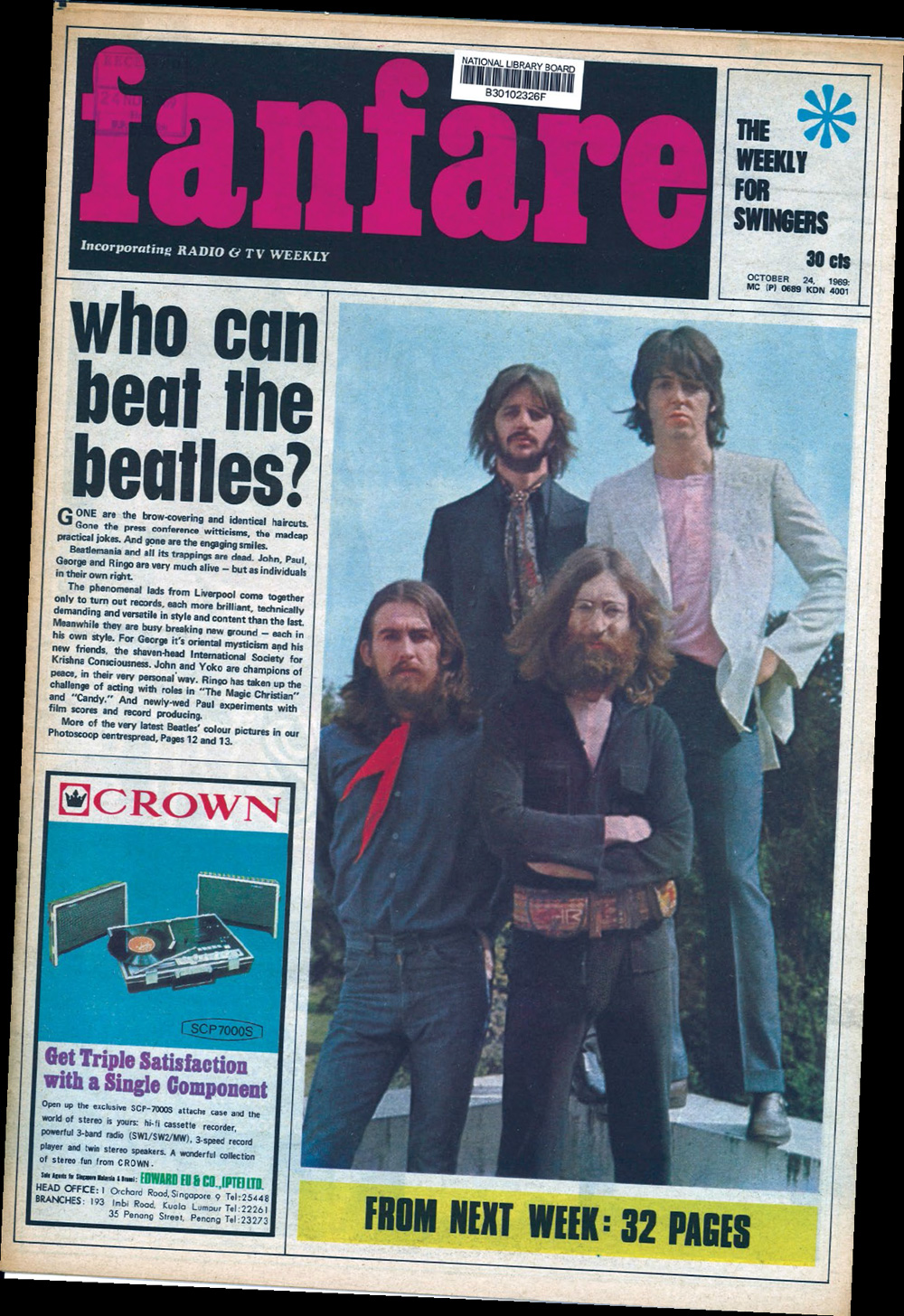
Fanfare (24 October 1969); publisher: Straits Times Press (S) Sdn. Bhd.
Billed as “The Weekly for Swingers”, Fanfare was the leading English-language entertainment magazine of the 1970s. Printed in colour on newsprint, this digest had a huge following among the hip teenagers and young adults of the day. Readers lapped up “chats” with stars, reports on the local entertainment scene as well as the latest in pop music and film from Hollywood and Hong Kong. Witty articles and columns by journalists Siva Choy, Sylvia Toh Paik Choo, Gloria Chandy, Margaret Cunico and the enigmatically named Kitchi Boy made Fanfare a much-loved bestseller for many years. The Beatles – Paul McCartney, Julian Lennon, George Harrison and Ringo Starr – took prime spot on the cover of this issue.
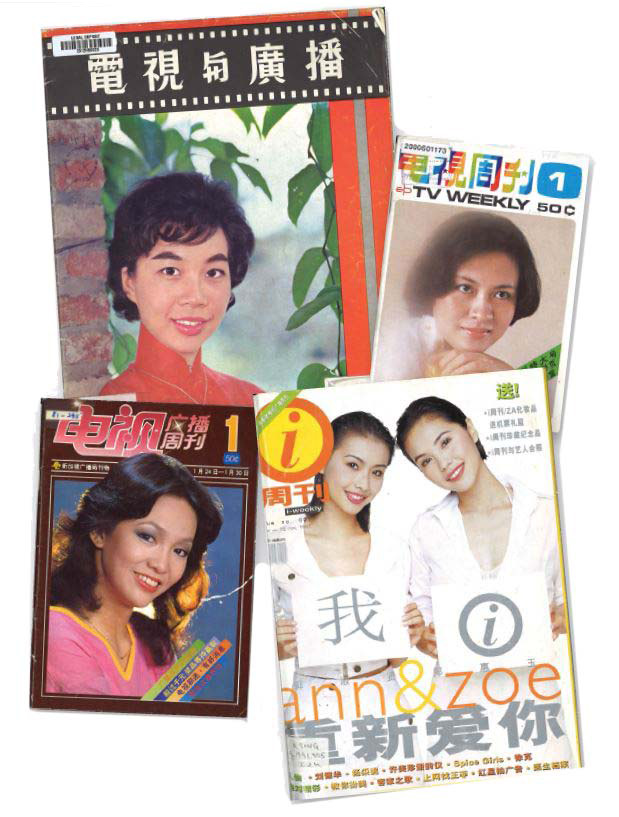
(Clockwise from top left) 电视与广播 TV & Radio Magazine (18 February 1963); 电视周刊 TV Weekly (1 January 1977); i周刊 i-Weekly (8–15 November 1997); and 电视广播周刊 TV & Radio Weekly (24–30 January 1981)
One of the first local showbiz magazines published in Chinese, 电视与广播 (TV & Radio Magazine) kept readers up-to-date with the latest entertainment news in the region during the 1960s and 70s. Launched on 18 February 1963 just three days after TV was introduced in Singapore on 15 February, the magazine featured TV broadcaster 梁路诗 as its first cover girl. With TV sets becoming more common in households, the magazine was renamed 电视周刊 (TV Weekly) on 1 January 1977 to provide more content on TV programmes. Actress Tay Seen Yei (郑心愉), who was also a reporter with the Chinese daily Min Pao, graced the cover of the first issue. 电视广播周刊 (TV & Radio Weekly), published on 24January 1981 with Hong Kong actress Carol Cheng (郑裕玲) on the cover, replaced TV Weekly at a time when Hong Kong drama serials such as Man in the Net became hugely popular with local viewers. In 1997, the magazine was rebranded again, this time as i周刊 (i-Weekly), touted as Singapore’s No. 1 Chinese magazine and an all-time favourite for delivering a weekly staple of celebrity news and interviews, and TV and movie features. Featured on the inaugural issue of i-Weekly (8–15 November 1997) are local actresses Ann Kok (郭舒贤) (left) and Zoe Tay (郑惠玉) (right).
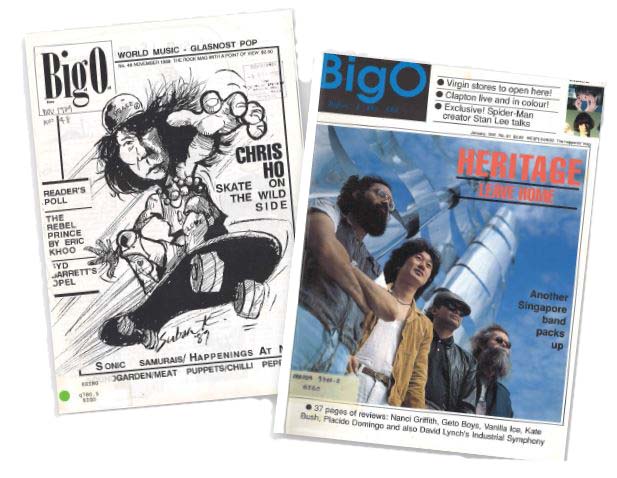
BigO (November 1989 and January 1991); publisher: Options Publications
Launched in September 1985 by journalists (and brothers) Michael and Philip Cheah, BigO sold itself as a “self-styled indie magazine” promoting the English music scene in Singapore.
Published as a monthly in black and white, BigO (or Before I Get Old) had a small but devoted following among fans of homegrown bands. The magazine was also known for organising live concerts and releasing compilations on cassettes and CDs. BigO ceased publication in 2002 and later became an online magazine. The cover of the November 1989 issue featured a caricature of singer Chris Ho. In the 1990s, the magazine went full colour as seen in the January 1991 issue featuring the veteran rock band Heritage as well as a new masthead and design.
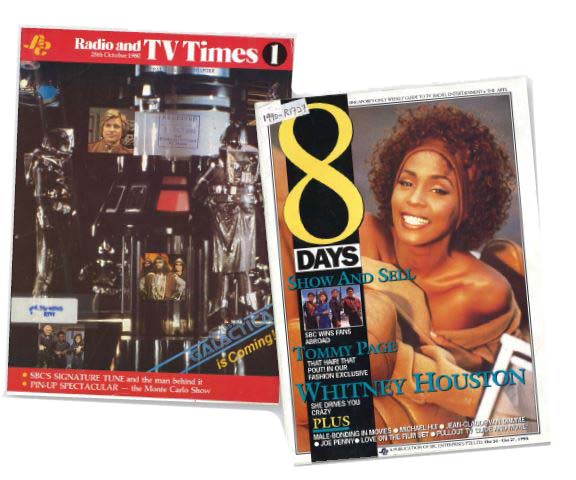
Radio & TV Times (25 October 1980) and 8 DAYS (20 October 1990)
When Radio Television Singapore was restructured as Singapore Broadcasting Corporation on 1 February 1980, it ushered in a new era in television. Radio & TV Times became its vehicle to publicise its line-up of both locally produced Chinese dramas and imported Western TV shows – such as the TV series Battlestar Galactica on the cover of the maiden issue – as well as the latest news in entertainment to English-speaking readers. In October 1990, Radio & TV Times was given a design makeover and renamed 8 DAYS. This early issue (20 October 1990) featured Whitney Houston on its cover, and in December 2009, the magazine celebrated the launch of its 1,000th issue. The focus of the magazine has since shifted from celebrity gossip and TV-related news to include film, music, books and food reviews.
Launched in October 2015, PublicationSG is a dedicated online catalogue of all physical materials found in the Legal Deposit Collection, a rich archive of nearly 1.1 million items that is now available for public access. Serials and magazines comprise 70 percent of the collection, with 25 percent being books and the rest made up of audiovisual materials and maps as well as ephemera. Members of the public can place reservations to view legal deposit items at $1.55 each at the information counters of the Lee Kong Chian Reference Library on levels 7–13 of the National Library Building, or via an online form. The items can only be viewed at designated work stations in the reference library.
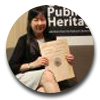 Barbara Quek is a Senior Librarian with the National Library, Singapore. She is currently with the Advocacy & Statutory Function group that oversees the compliance of Legal Deposit in Singapore.
Barbara Quek is a Senior Librarian with the National Library, Singapore. She is currently with the Advocacy & Statutory Function group that oversees the compliance of Legal Deposit in Singapore.
 Zoe Yeo is an Associate Librarian with the National Library, Singapore. Her responsibilities include developing the National Library’s collections as well as providing content and reference services on topics relating to Singapore and Southeast Asia.
Zoe Yeo is an Associate Librarian with the National Library, Singapore. Her responsibilities include developing the National Library’s collections as well as providing content and reference services on topics relating to Singapore and Southeast Asia.
REFERENCES
Arora, M. (Ed.). (2007). Small steps, giant leaps: A history of AWARE and the women’s movement in Singapore. Singapore: Association of Women for Action and Research. (Call no.: RSING 305.42095957 SMA)
Big O. (2016). BigO. Retrieved from BigO website.
Chew, P., & Lam, J. (Eds.). (1993). Voices & choices: The women’s movement in Singapore. Singapore: Singapore Council of Women’s Organisation and Singapore Baha’i Women’s Committee. (Call no.: RSING 305.42095957 VOI)
Chia, E. (2004, March 19). BAE watch. Today, p. 48. Retrieved from NewspaperSG.
Her World is still the No.1 seller. (1999, April 4). The Straits Times, p. 2. Retrieved from NewspaperSG.
Lee, S.C. (1988, November 1). It all started with Man in the Net. The Straits Times, p. 4. Retrieved from NewspaperSG.
Loong, M.L. (Ed.). (1988). On television in Singapore. Singapore: Singapore Broadcasting Corporation. (Call no.: RSING 384.554095957 ON)
Singapore Film Commission. (1999). Singapore film directory. Singapore: Singapore Film Commission. (Call no.: RSING 384.80255957 SFD)
The ‘supporters’ of entertainment magazines. (1988, November 1). The Straits Times, p. 4. Retrieved from NewspaperSG.
Toh, C. (2009, December 11). 8 Days every week, 1,000 times. Today, p. 102. Retrieved from NewspaperSG.

